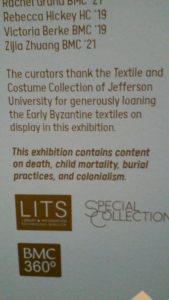I’m old enough to remember when everyone smoked—when college classrooms had ashtrays, airline meals came with a little package of two cigarettes and a book of matches, and athletes at Madison Square Garden (the old one) competed below a blue haze of smoke in the rafters. I can also remember how smoking was a social signifier. Taking out a pack of cigarettes signaled a pause in conversation and perhaps a move to another level of intimacy. The little rituals—tapping a cigarette on the pack, flicking open a Zippo or Dunhill, offering your companion a cigarette (and maybe lighting it)—all said what kind of people were there, and what they thought of each other. Even the kind of cigarette mattered; when I was an undergraduate, a whiff of the distinctive, burning-dung smell of Gauloise meant that a left-wing intellectual was in the room, the sight of the black paper and gold tips of Balkan Sobranies declared (to me at least) pretentious aestheticism, and the flat red pack of Dunhills meant that someone had money to burn.
I’m also old enough to remember when smoking become uncool, and how long it took. It it was more than ten years after the Surgeon General’s Report of 1964 that Minnesota passed the first, tentative ban on smoking in public places, and it took another decade for such bans to become general. When I began teaching at Episcopal Academy in 1985, the faculty lounge was still a smoke-filled room, and the Student-Faculty Senate passed a special dispensation every year so that students could smoke at the prom; it wasn’t long, though, before smoking was banned altogether, on campus and at any campus function. But the most effective thing was the force of social disapproval. Somehow smoking became Not Done–a sign of weakness and lack of proper regard for one’s own health and that of others. It became OK to ask someone not to smoke in your presence, even if there was no formal ban on it, and to expect them to accede to your demand. Now nicotine is an expensive, slightly addictive drug of the lower classes. The last time I looked, cigarettes in my neck of the woods cost nearly $10.00 a pack, and a pack a day will set you back enough to make a sizable dent in the $26,572 that, according to the Pew Research Center, marks the upper limit of the lower income bracket in Pennsylvania.
And so I come to Twitter (and its progenitor Facebook and cousin Instagram). They look a bit like smoking did fifty years ago. Everyone does it. Their little rituals—checking our phones, flicking open the case, tapping hearts, typing messages, and sending selfies—occupy our hands and fill our leisure. They proclaim class and affiliation, and in the academic world, some people take them seriously enough to suggest that an assistant professor’s tweets should be part of a tenure dossier. But signs are beginning to appear that just as we paid for the pleasure of smoking with our health, so we pay for the delight of tweeting with our sanity, and that social media are at least as addictive as smoking. I wonder whether we’ll see some shift in elite opinion, followed by bans here and there (in schools, perhaps), followed by more and more people giving up on Facebook and its kin, until, sometime around 2070, Twitter becomes yet another way to keep the poor occupied.


